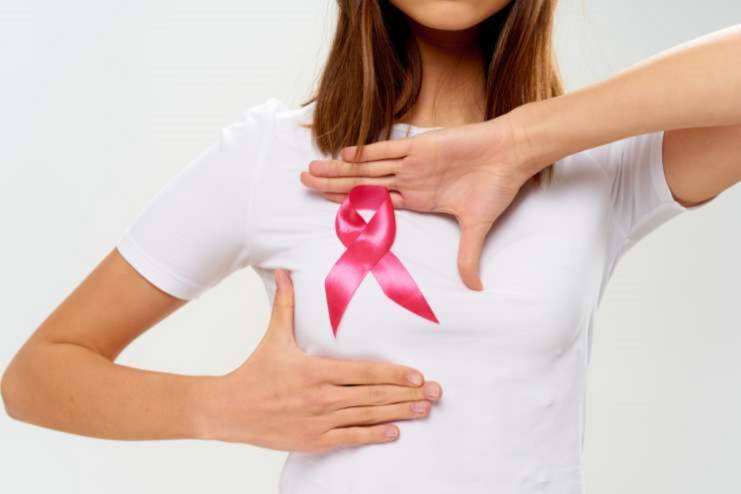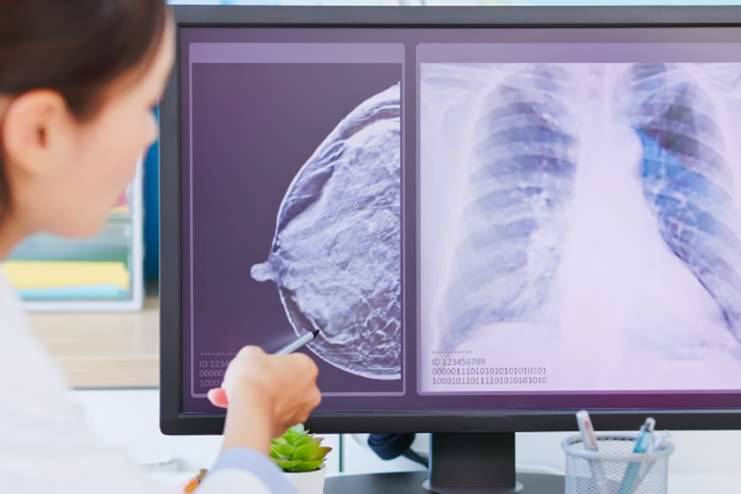Affiliate Disclaimer
Some links in this article are affiliate links. We may earn a small commission if you make a purchase through these links, at no extra cost to you. We only recommend products we find useful to our readersNational Breast Cancer Awareness Month (NBCAM) is an annual event that kickstarts a global campaign to turn awareness into action. Since its founding in 1985, this program has grown into a powerful campaign that unites communities, organizations, and individuals in the battle against breast cancer. NBCAM empowers women to prioritize their breast health through routine screenings and self-examinations by highlighting the significance of early detection and education.
This month is crucial because it raises awareness of breast cancer and provides hope and support to those who are affected by the disease. It acts as a stark reminder to adopt preventative measures and allocate funds for research to develop more effective therapies and, eventually, a cure.
The strongest risk factor for breast cancer is being female, with approximately 99% of all breast cancer cases occurring in women and less than 1% in men. In 157 out of 185 nations, breast cancer was the most frequent cancer among women in 2022.
Types of Breast Cancer

Breast cancer is a complicated mosaic of several forms, each with unique traits and treatment-related implications, rather than a single disease. Understanding these variations is essential to diagnosing and treating patients effectively.
Invasive Breast Cancer:
Invasive (or infiltrating) breast cancer refers to breast cancer that has spread into the surrounding breast tissue. The two most prevalent forms of invasive breast cancer are distinguished by where they begin in the breast:
- Invasive ductal carcinomas: The milk ducts, which are the tubes that convey milk from lobules to the nipple, are the site of invasive ductal carcinoma (IDC). This cancer accounts for nearly 80% of all cases of breast cancer, making it the most prevalent type.
- Invasive lobular carcinomas: this invasive cancer originates in the lobules, which are the milk-producing glands in the breast. These account for about 10% of all invasive breast cancer cases, making it the second most prevalent.
Non-Invasive Breast Cancer:
When breast cancer is referred to as non-invasive (or in situ), it indicates that the cancer has not progressed outside of the original breast tissue. Precancers is another term for non-invasive breast cancers. Non-invasive breast cancer primarily comes in two varieties:
- Ductal carcinoma in situ (DCIS): Breast cancer that is not invasive and has not progressed beyond the milk ducts where it originated is known as ductal carcinoma in situ (DCIS). DCIS raises the chance of getting invasive breast cancer later in life, but it is not a life-threatening condition. Experts believe that DCIS is a precursor to invasive breast cancer. It accounts for about 16% of all breast cancer diagnoses.
- Lobular carcinoma in situ (LCIS): Breast cancer that is non-invasive and has not spread outside of the lobules where it originated is known as lobular carcinoma in situ (LCIS). LCIS is not a natural breast cancer, despite its name; instead, it is a benign breast disease.
Treatment and care must be individualized for each kind of breast cancer, with a focus on early detection and specialized medical techniques.
Symptoms and Early Detection

Early detection of breast cancer symptoms can be critical to prompt intervention.
- An evident lump or tumor in the breast or underarm region that feels different from the surrounding tissue
- Changes in the size or form of the breasts
- Skin dimpling or puckering
- Continuous nipple discharge, especially if it is bloody
Early identification is essential, as it can improve survival rates and significantly boost treatment success rates. Knowing your body and getting regular screenings are essential tactics in this battle.
Self-examination is a valuable technique for early detection. Acquainting oneself with the typical appearance and texture of one’s breasts enables one to detect any odd alterations. Here’s how to perform a breast self-exam:
- Start by visually examining your breasts in the mirror to look for any irregularities.
- Next, palpate the entire breast with flat, circular-moving fingers, starting from the outer borders and working toward the center.
- Remember to check under the arms as well.
- Monthly self-examinations encourage a proactive attitude toward breast health.
Using these techniques with routine mammography and clinical breast exams results in a solid early detection and intervention plan.
Read Also: Early Detection and Why Mammograms Matter
Treatment Options

While navigating the maze of breast cancer treatment options can be daunting, being aware of your options is essential to making well-informed decisions. Treatment regimens are frequently customized based on the patient’s health history, type of cancer, and the stage.
- Surgery: Surgery is the most often used treatment for breast cancer. It entails trimming the tumor and any surrounding margins. Possible surgical choices include lumpectomy, partial mastectomy, radical mastectomy, and reconstruction, where surgeons remove one or both breasts. To find out if cancer has spread to lymph nodes, sentinel node biopsies are frequently performed in conjunction with this.
- Chemotherapy: Chemotherapy uses strong medications to target and destroy cancer cells that divide quickly. It is frequently used either before or after surgery to reduce tumor size and eradicate any leftover cells.
- Radiation: Another important element is radiation therapy, which uses high-energy rays to kill cancer cells in a particular region, usually after surgery, to lower the chance of recurrence.
In recent years, new treatments have broadened the scope of available options:
- Immunotherapy: uses the body’s immune system to fight cancer more successfully
- Targeted therapies: concentrate on particular traits of cancer cells, such as HER2-positive malignancies.
- Genetic Profiling: Novel techniques based on genetic profiling and personalized therapy are emerging as medical science advances, providing hope and new treatment options.
Every choice is essential to the all-encompassing strategy that fights breast cancer, with the ultimate goal being to improve results and quality of life.
Community Support and Resources

Although navigating the breast cancer journey might feel lonely, there is a robust community support system and a wealth of services available to offer information, guidance, and comfort. Support groups, both virtual and physical, provide patients and their families with priceless venues to interact, exchange stories, and find solace from people who genuinely comprehend their challenges.
- Susan G. Komen and other local organizations provide a range of resources, such as instructional materials and support groups. Their network empowers people via information and shared experiences, creating community. More information about the offerings is available here.
- For those who would rather interact digitally, websites such as Breastcancer.org offer online forums and support groups where various people can ask questions and share their experiences. Click this link to see their resources.
- Organizations like the National Cancer Institute’s Cancer Information Service offer hotlines that can direct people to other resources and answer inquiries.
Moreover, cancer social workers at nearby hospitals are frequently available to assist patients in making connections with nearby support groups, counseling services, and educational initiatives. By utilizing these local services, patients and their families can acquire the information, support, and fortitude they need to tackle the obstacles of breast cancer together.
Conclusion
The path of breast cancer impacts numerous lives, but awareness, early detection, and a robust support system may turn this frightening experience into one of hope and resiliency.
National Breast Cancer Awareness Month serves as a reminder of our shared obligation to inform, encourage, and assist people impacted by this illness. By understanding the diverse forms of breast cancer, identifying indications, and investigating available treatments, we enable ourselves and our loved ones to adopt proactive measures in their healthcare journey.
By working together, we can create a supportive and encouraging community where no one has to fight breast cancer alone.
References
- https://mheds.org/?p=7452
- https://www.ncbi.nlm.nih.gov/pmc/articles/PMC10861285/
- https://www.nationalbreastcancer.org/nbcf-programs/breast-health-education/
- https://fitness.beaconhealthsystem.org/2023/09/13/empowering-lives-the-importance-of-breast-cancer-awareness/
- https://www.who.int/news-room/fact-sheets/detail/breast-cancer
- https://www.breastcancer.org/types/invasive-ductal-carcinoma
- https://www.breastcancer.org/types
- https://www.breastcancer.org/types/invasive-lobular-carcinoma
- https://www.breastcancer.org/types/ductal-carcinoma-in-situ
- https://www.breastcancer.org/benign-breast-conditions/lobular-carcinoma-in-situ-atypical-lobular-hyperplasia
- https://www.nationalbreastcancer.org/types-of-breast-cancer/
- https://www.cancer.org/cancer/types/breast-cancer/about/types-of-breast-cancer.html
- https://www.cancer.org/cancer/types/breast-cancer/treatment.html
- https://www.nationalbreastcancer.org/breast-cancer-treatment/
- https://www.cancer.gov/types/breast/patient/breast-treatment-pdq
- https://www.mayoclinic.org/diseases-conditions/breast-cancer/diagnosis-treatment/drc-20352475
- https://www.cdc.gov/breast-cancer/treatment/index.html
- https://www.nationalbreastcancer.org/breast-cancer-surgery/
- https://www.nationalbreastcancer.org/breast-cancer-chemotherapy/
- https://www.komen.org/
- https://www.cancer.gov/contact
- https://www.breastcancer.org/
In this Article

















